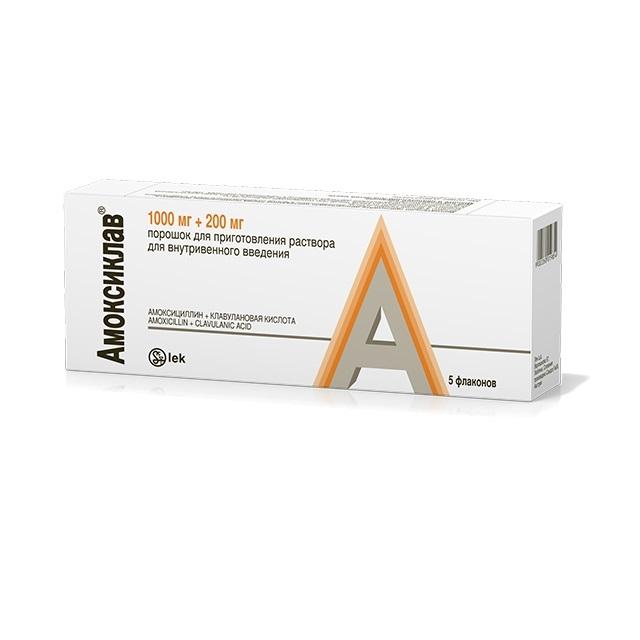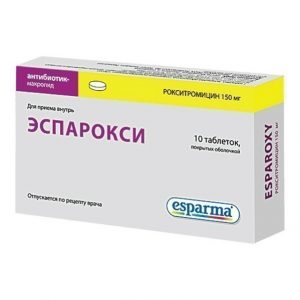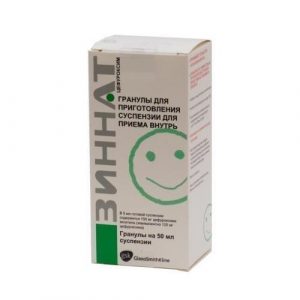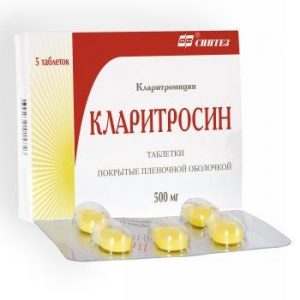Description
Release form
Powder for the preparation of an injectable solution
Packing
5 fl.
Pharmacological action
Amoxiclav – a broad-spectrum antibiotic contains semisynthetic penicillin amoxicillin and a b-lactamase inhibitor clavulanic acid. Clavulanic acid inhibits most clinically significant b-lactamases (types 2, 3, 4 and 5 – according to the classification of Richmond Sykes), produced by Staphylococcus spp., Escherichia coli, Proteus mirabilis, Haemophilus influenzae, Moraxella catarrhalis, Bacteroides spp. Inactive against type 1 b-lactamases produced by Enterobacter spp., Morganella morganii, Pseudomonas aeruginosa, Serratia spp., Acinetobacter spp.
This combination provides high bactericidal activity of Amoxiclav (including against strains of microorganisms resistant to amoxicillin). Clavulanic acid, having a higher affinity for b-lactamase than amoxicillin, forms a stable deactivated complex with the enzyme, preventing the enzymatic degradation of amoxicillin under the action of b-lactamases.
Thus, Amoxiclav acts bactericidal on a wide range of gram-positive and gram-negative bacteria (including strains, which have become resistant to beta-lactam antibiotics due to the production of b-lactamases).
Amoxiclav is active against aerobic gram-positive bacteria: Streptococcus spp. (including Streptococcus pneumoniae, Streptococcus viridans, Streptococcus milleri, Streptococcus pyogenes, Streptococcus bovis), Enterococcus faecium, Staphylococcus aureus (except for methicillin-resistant strains), Staphylococcus epidermidis, spp. monocytogenes, Nocardia asteroides aerobic gram-negative bacteria: Aeromonas spp., Bordetella pertussis, Brucella spp., Campylobacter jejuni, Campylobacter coli, Citrobacter spp. (moderately sensitive), Escherichia coli, Gardnerella vaginalis, Haemophilus ducreyi, Haemophilus influenzae, Helicobacter pylori, Klebsiella spp., Legionella pneumophila, Moraxella catarrhalis, Morganella spp. (moderately sensitive), Neisseria gonorrhoeae, Neisseria meningitidis, Pasteurella multocida, Proteus mirabilis, Proteus vulgaris, Providencia spp., Salmonella spp., Shigella spp., Vibrio cholerae, Yersinia enterocolitica (moderately susceptible) bacteria Acteria (including Bacteroides fragilis), Prevotella melaninogenica, Clostridium spp. (except Clostridium difficile), Peptostreptococcus spp., Eikenella corrodens, Fusobacterium spp., Propionibacterium spp., Treponema pallidum.
Mycobacterium tuberculosis, Mycobacterium fortuitum, Mycobacterium bovis, Mycobacterium kansasii are moderately sensitive to the drug.
Mycobacterium chelonae is resistant to the drug.
Indications
Treatment of infectious and inflammatory diseases caused by microorganisms sensitive to the drug: – infections of the upper respiratory tract and ENT organs (including acute and chronic sinusitis, acute and chronic otitis media, pharyngeal abscess, tonsillitis, pharyngitis)
– infections of the lower respiratory tract (including acute bronchitis with bacterial superinfection, chronic bronchitis, pneumonia)
– urinary tract infections
– gynecological infections
– infections of the skin and soft tissues
– infections of the bones and joints
– infections of the biliary tract (cholecystitis, cholangitis)
– odontogenic infections.
Contraindications
– cholestatic jaundice or liver dysfunction caused by the administration of amoxicillin / clavulanic acid in the history of
– hypersensitivity to amoxicillin, clavulanic acid or penicillins.
With caution, the drug should be prescribed for allergic reactions to cephalosporins and pseudomembranous colitis in the anamnesis, liver failure, severe renal impairment.
Due to the fact that in a large number of patients with infectious mononucleosis and lymphocytic leukemia who received ampicillin, the appearance of an erythematous rash was observed, the use of ampicillin antibiotics in such patients is not recommended.
Use during pregnancy and lactation
Amoxicillin and clavulanic acid pass into breast milk in small amounts.
Amoxiclav can be used during pregnancy if the expected benefit to the mother outweighs the potential risk to the fetus.
Special instructions
During the course of treatment, the function of hematopoiesis, liver and kidneys should be monitored.
Patients with severe renal impairment require adequate dosage adjustment or increased dosing intervals.
In order to reduce the risk of adverse reactions from the gastrointestinal tract, the drug should be taken with meals.
When using Amoxiclav, a false-positive reaction is possible when determining the level of glucose in the urine when using Benedict’s reagent or Felling’s solution (enzymatic reactions with glucose oxidase are recommended).
Composition
1 bottle with lyophilized powder contains 1000 mg of amoxicillin (as sodium salt) and clavulanic acid Ty (as potassium salt) 200 mg.
Dosage and administration of
The drug is administered iv (jet slowly or dropwise)
Adults and children over 12 years of age (weighing more than 40 kg) – 1.2 g every 8 hours, for severe infections – every 6 hours
Children 3 months – 12 years old – 30 mg / kg every 8 hours, with severe infections – every 6 hours.
Children up to 3 months. – 30 mg / kg every 8 hours,
for premature and newborns – 30 mg / kg every 12 hours.
Every 30 mg of Amoxiclav contains 25 mg of amoxicillin and 5 mg of clavulanic acid.
The course of treatment is 5-14 days. With a decrease in the severity of symptoms, the transition to oral forms of the drug is recommended to continue therapy.
To prevent postoperative iv infections before anesthesia, the drug is administered at a dose of 1.2 g.
Dosage regimen for patients with renal failureThis should be adjusted. Amoxiclav should be given as an intravenous injection within 20 minutes after resuspension. Do not freeze the solution.
Side effects of the digestive system: possible loss of appetite, nausea, vomiting, diarrhea rarely – a transient increase in the activity of liver enzymes (ALT, AST), impaired liver function in rare cases – cholestatic jaundice, hepatitis, pseudomembranous colitis.
Allergic reactions: erythematous rash, pruritus, urticaria, rarely – multiforme exudative erythema, angioedema, anaphylactic shock in isolated cases – exfoliative dermatitis, Stevens-Johnson syndrome.
Other: rarely – development of superinfection, candidiasis.
Drug Interactions
With the simultaneous use of Amoxiclav and indirect anticoagulants, an increase in prothrombin time is noted. Therefore, this combination is prescribed with caution.
With the simultaneous use of Amoxiclav with allopurinol, the risk of developing side effects such as exanthema increases.
With the simultaneous use of Amoxiclav enhances the toxicity of methotrexate.
The combination of amoxicillin with rifampicin is antagonistic (there is a mutual weakening of the antibacterial effect).
Amoxiclav should not be used simultaneously with bacteriostatic antibiotics (macrolides, tetracyclines), sulfonamides due to a possible decrease in the effectiveness of Amoxiclav.
With the simultaneous use of Amoxiclav reduces the effectiveness of oral contraceptives.
overdose There are no reports of fatal or life-threatening side effects due to drug overdose.
Symptoms: abdominal pain, diarrhea, vomiting may also cause anxiety, insomnia, dizziness in some cases – convulsions.
Treatment: in the case of recent drug administration (less than 4 h), gastric lavage and activated charcoal should be performed to reduce the absorption of the drug, if necessary, symptomatic therapy should be performed. Hemodialysis is effective.
Storage Conditions
The product should be stored in a dry, out of the reach of children at a temperature not exceeding 25 ° C.
Shelf life
2 years.
Deystvuyushtee substance
amoxicillin, Klavulanovaya Chisloth
dosage form
infusion solution
Prescription
Prescription
For children over 12 years old For children over 12 years, For adults as prescribed by a doctor




